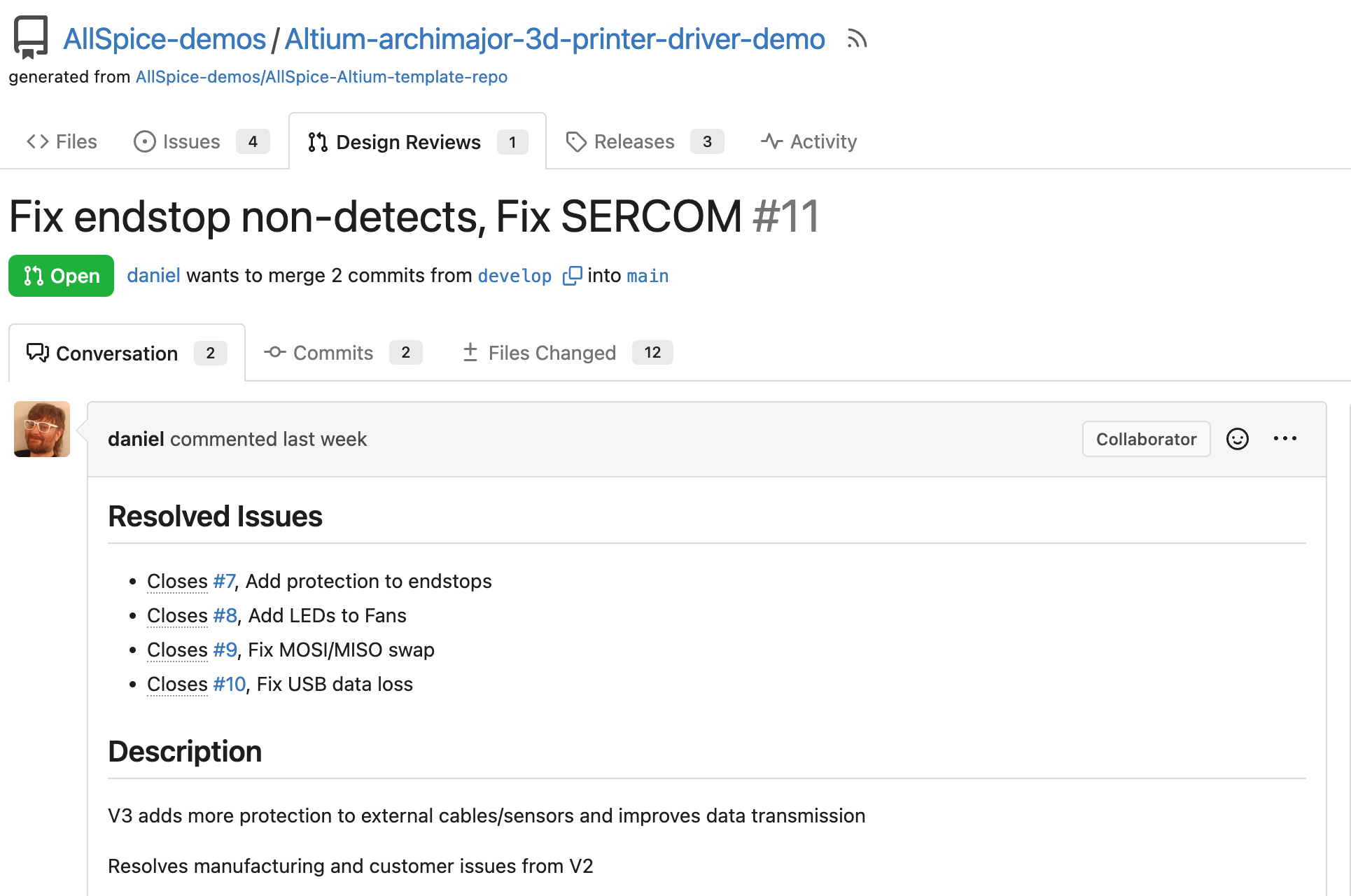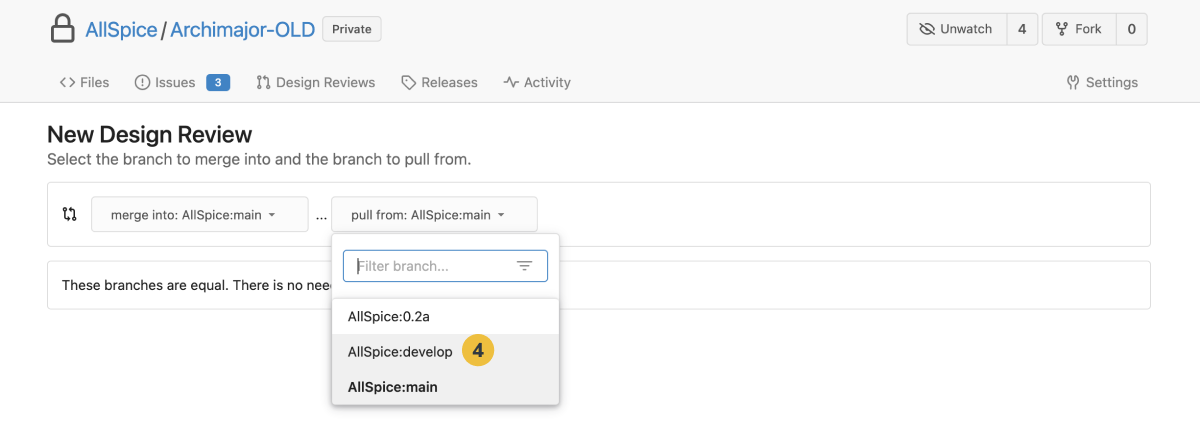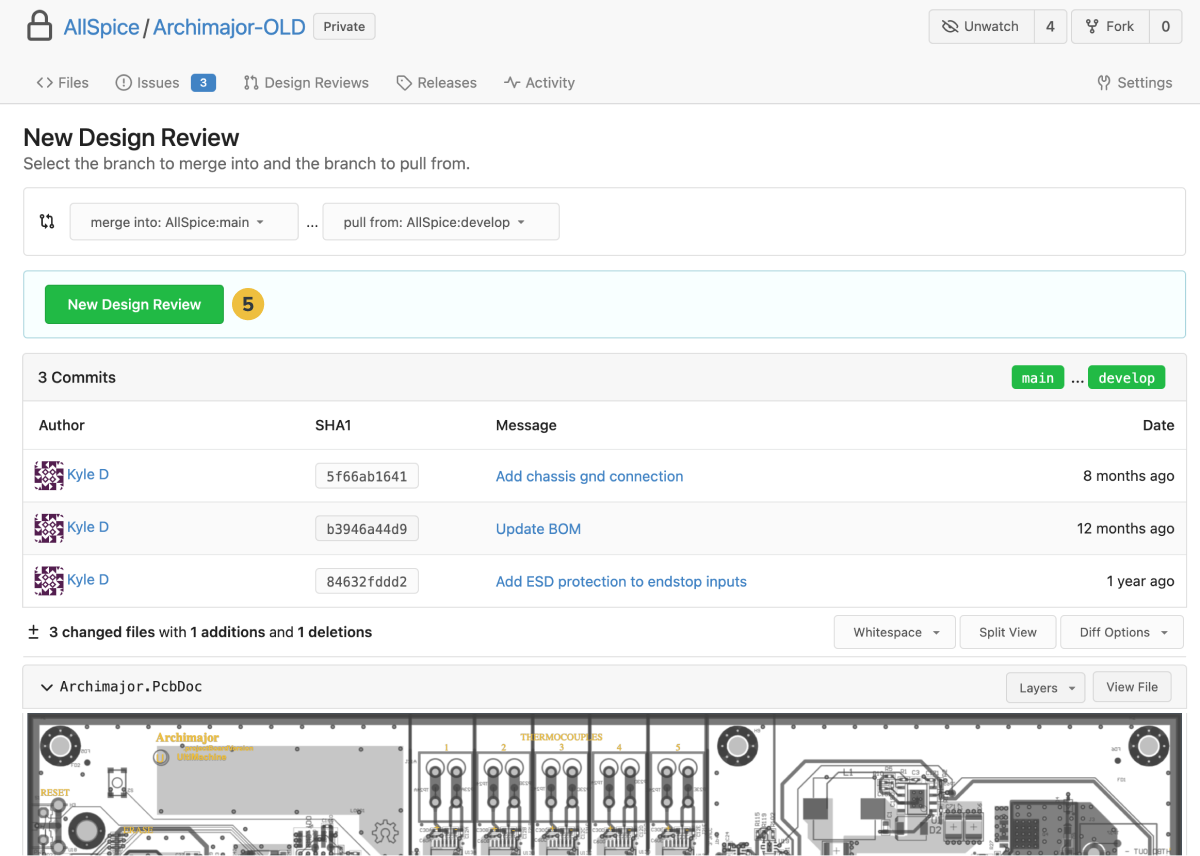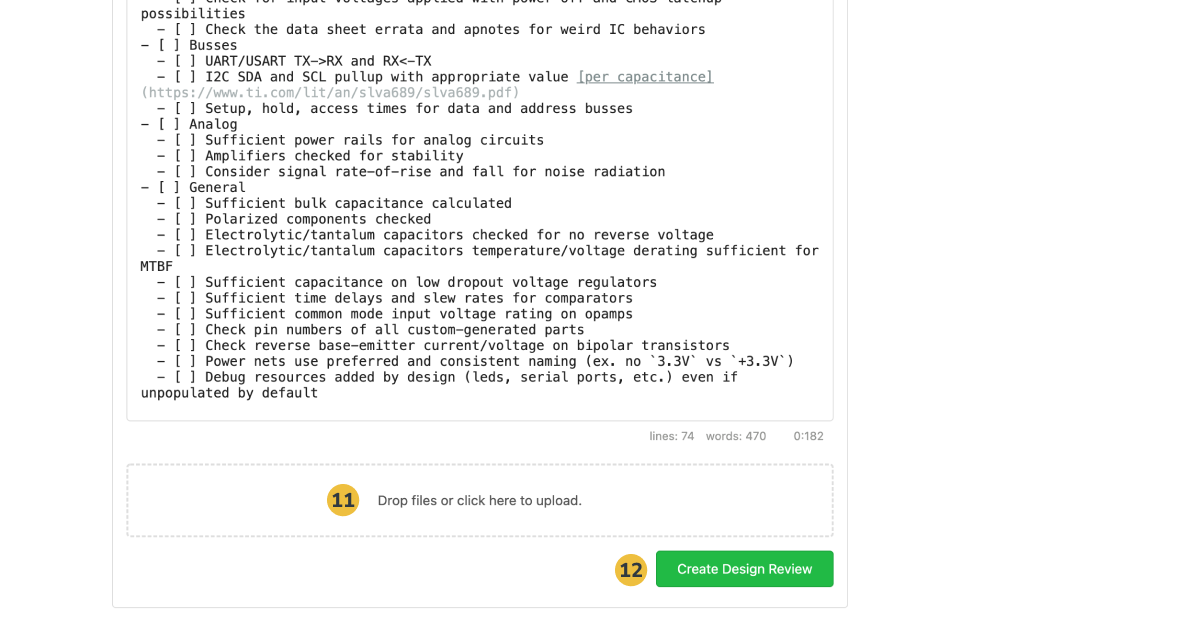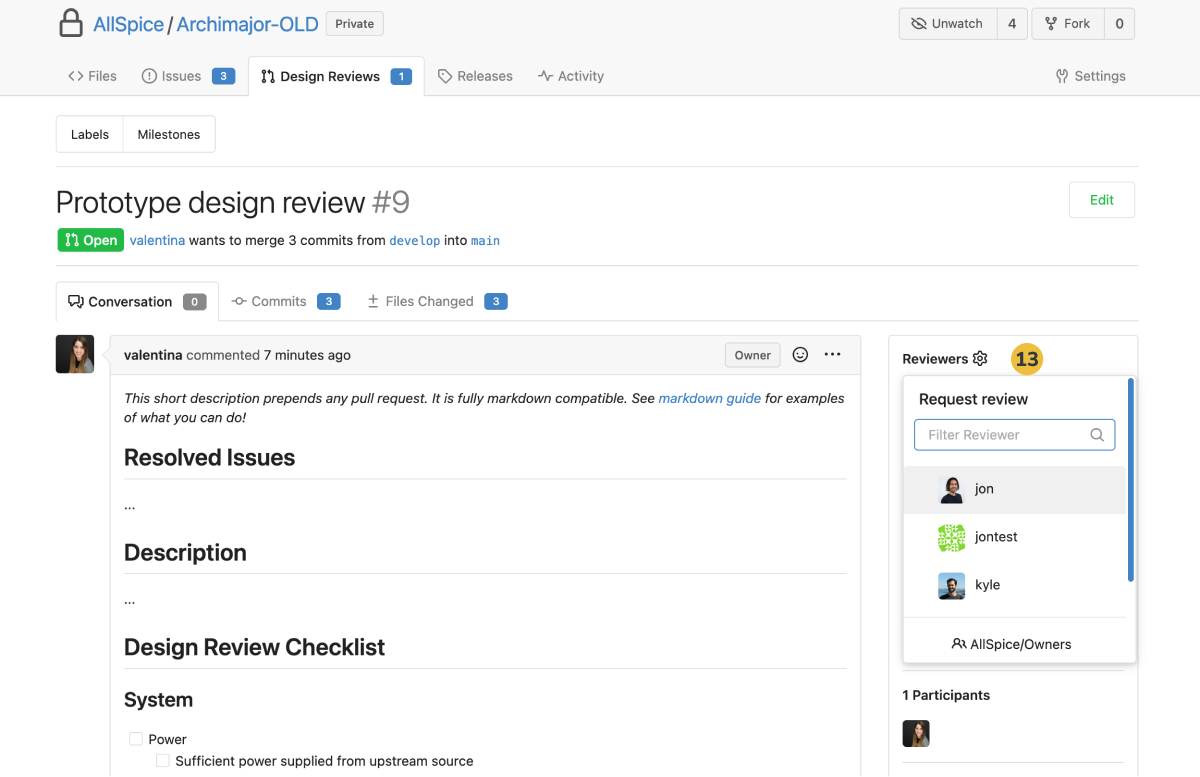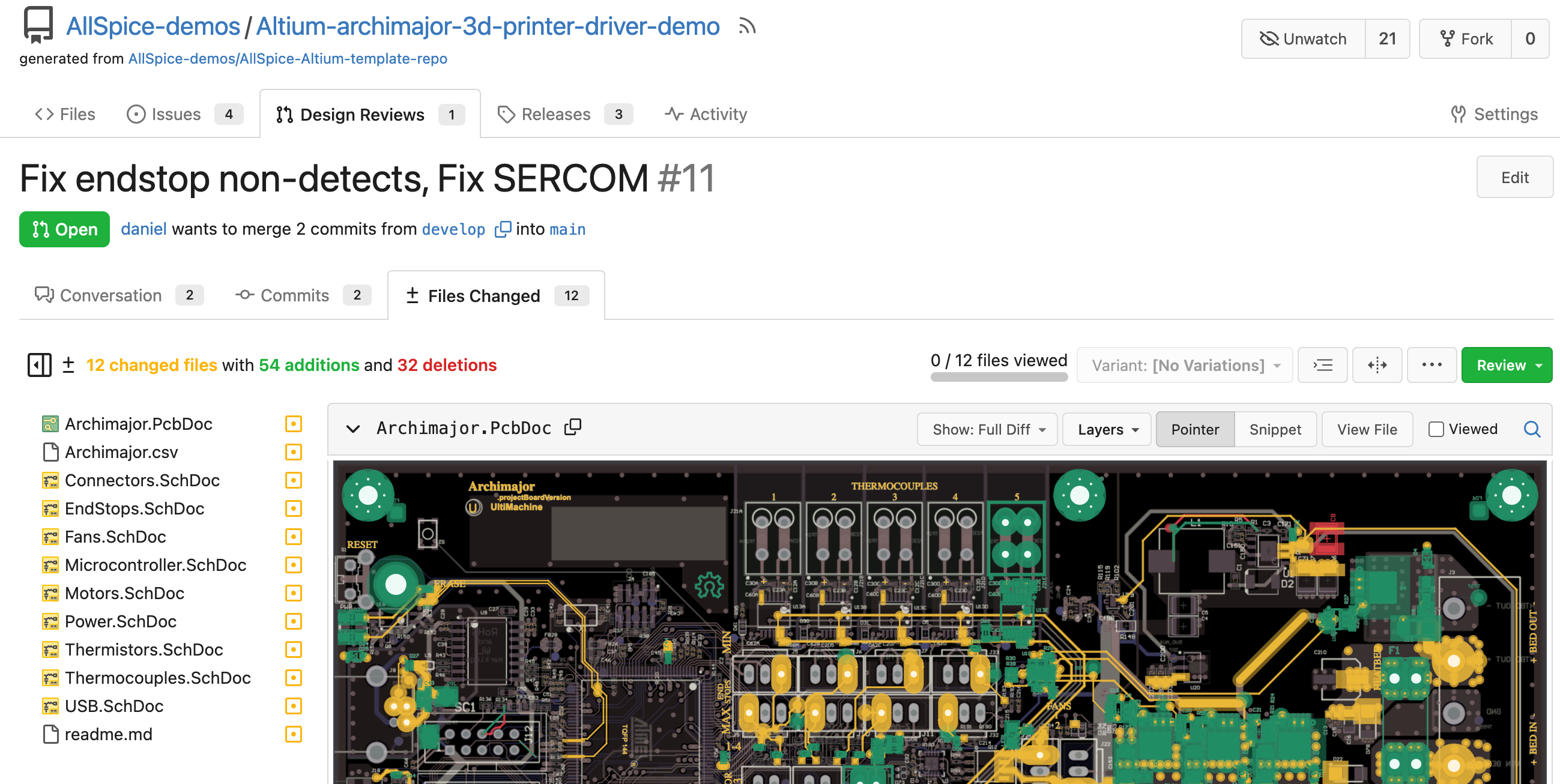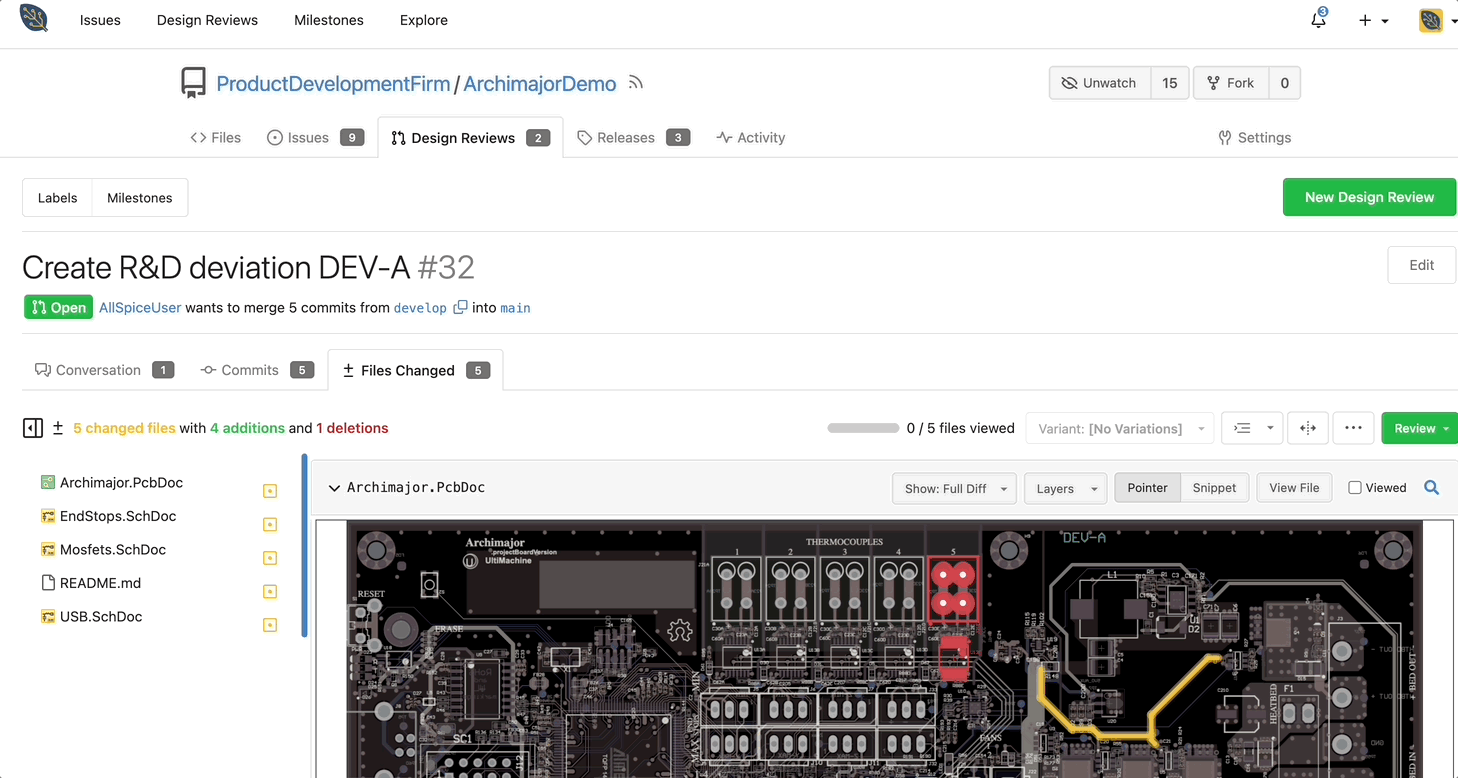Git 101: What is Git?
Git is a magic tool to help you track, version, and release your files.
It is easy to learn everything you need to know for day-to-day tasks, and powerful enough for automation.
Git runs on our AllSpice server and on your local machine.
Track your design changes
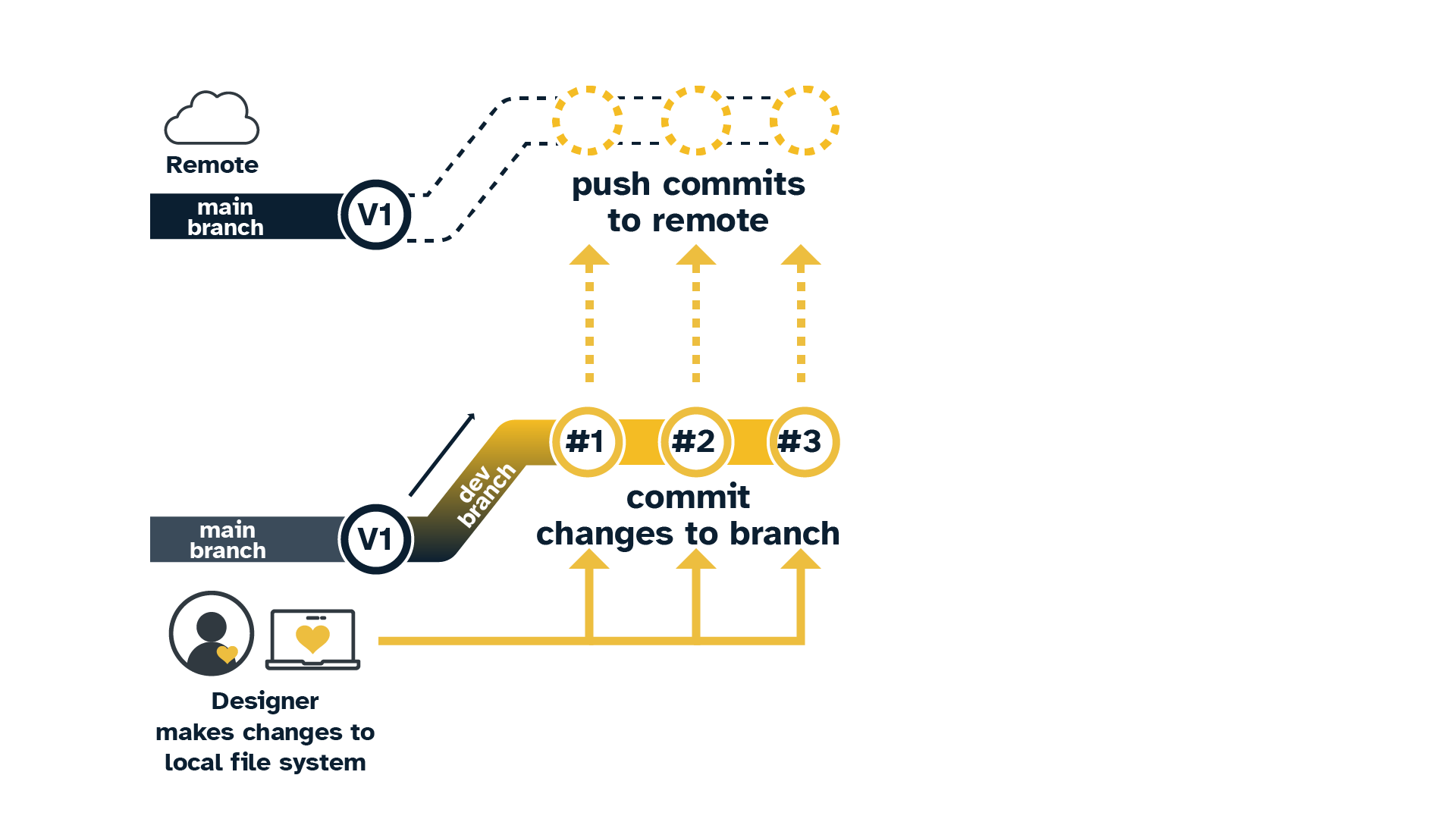
Change from main to develop branch
Create design changes on their local file system
Commit the files to their local develop branch
Add a meaningful commit message
"Remove C237, 0.2uF bypass cap from U14
Commits are pushed to remote branch
Review your design changes
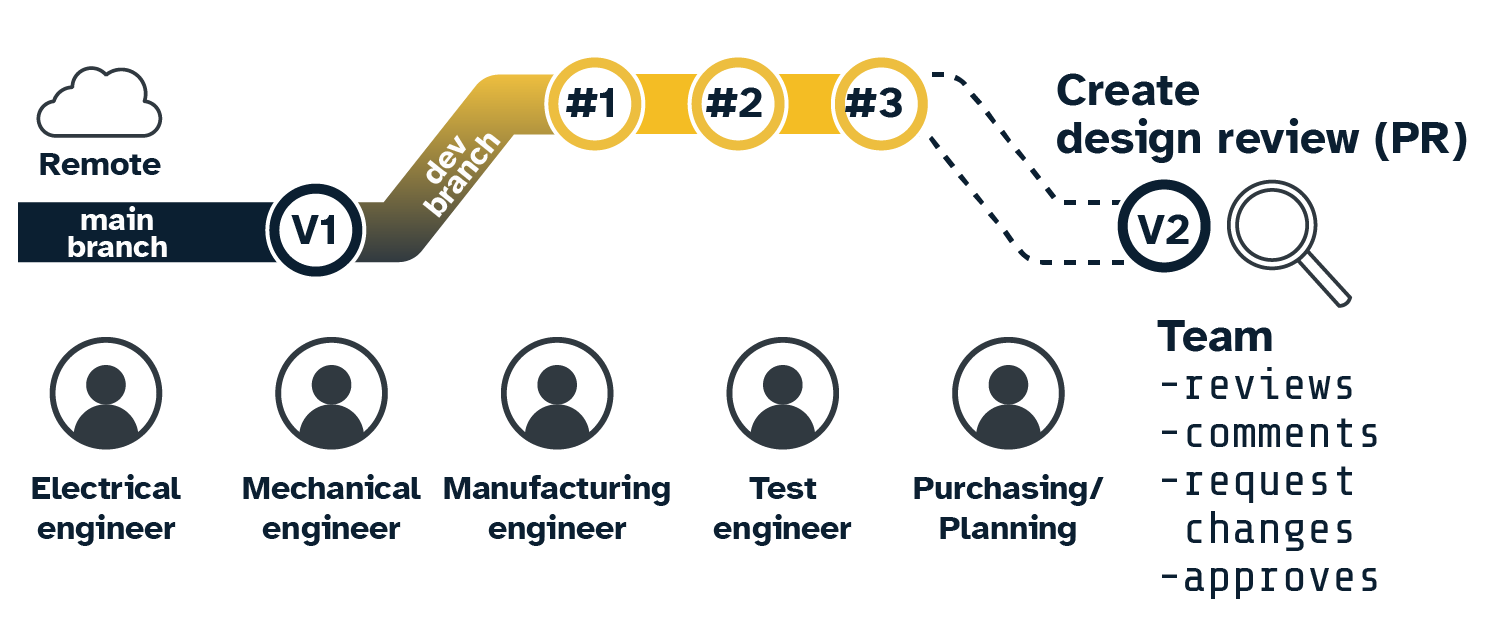
Create a Design Review to merge develop branch to main branch
Team reviews changes
Suggest/require changes
Review fabrication/output files
Create Issues to resolve/defer action items
Approves design review by merging develop branch to main
Git 101: Installing Git
your title goes here
If you've never used Git before, then we recommend GitHub Desktop for ease of use. Your teammates might make a recommendation
Git Bash Command Line Interface (CLI) Download
TortoiseGit Download (File Explorer interface)
GitHub Desktop Download (Easiest for beginners)
Source Tree Download
Git 101: Branches
Branches organize and control change
Changes are first committed to a local branch and then are pushed to a server. Changes can't move from one branch to another without using a design review, or by manually adding them.
We recommend a two-branch strategy for hardware development.
- Main branch alway is the latest release
- Releases for V1, V2...VN
- Develop branch contains proposed changes
- All developers work on the same branch
Branch protection allows you to prevent accidental pushes or merges.
Visit your repository settings
Click on the Branches menu
Click on "Add New Rule" to add a new rule
Add the name of the branch you would like to protect and configure the settings.
We recommend disabling push
Git 101: Design reviews
Design reviews
Git Design Reviews allow you to verify the file changes before you merge one branch to another. It is the equivalent to an ECO.
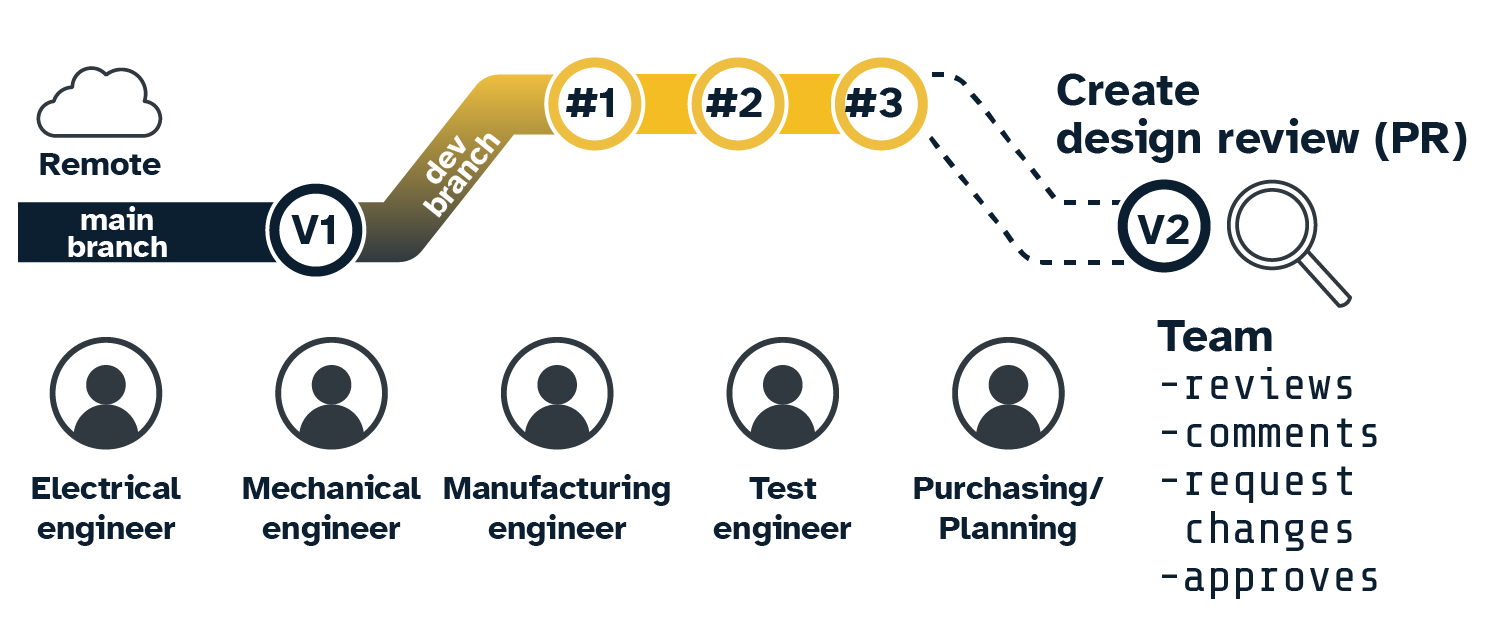
AllSpice.io Design Reviews are Git Pull Requests (PR) with a name more familiar to electrical engineers
Design review interface
Design Reviews have 3 main tabs
Design Review interface
Conversations
Reviews
Requests for change
Comments or instructions
Request for investigation
Commits
Serial list of all changes
Files Changed
Visual diffs of PCBs, Schematics, BOMs, and any text files
Creating a Design Review
Visit your repo
Click on the Design Reviews Tab
Click on New Design Review
Select the pull-from branch on the right. This is usually develop
Ensure the branch on the left is your target branch. This is usually main.
Click New Design Review
Enter a name or title for your review
You can create a Design Review template that will pre-populate the description with useful information and checklists. To learn more visit the main article.
Add any Labels needed to categorize the review
Attach milestones to track your repos
Once everything looks ready, click Create Design Review
Add Reviewers who will approve and be able to comment
Design Review Visual Diff (Files Changed)
The Files Changed Tab helps you review your changes.
On the left is a file tree showing which files are new, which have changes, and which have been deleted.
The file diffs are on the right.
You can create snippets to communicate any requested changes.
View your schematic or PCB
Click on Snippet
Highlight the section you wish to show
Click the "+" button
Add your custom message
Click "Add single comment"
To learn more Full article
Git 101: Issues
Issues are the equivalent of Action Items. You can use them to highlight work that needs to be done immediately, or use it to track work done over time.
You can attach files and have a full conversation about the issue. You can gate Deisgn Reviews from completing until certain issues have been closed.
You can create multiple issue templates and create custom interfaces.
Creating an issue
Visit your repo
Click on issues
Click new issues
If you have multiple issue templates, select your template
Fill out the issue
Assign Assignees, add labels, attach to milestones
@mention your teammates
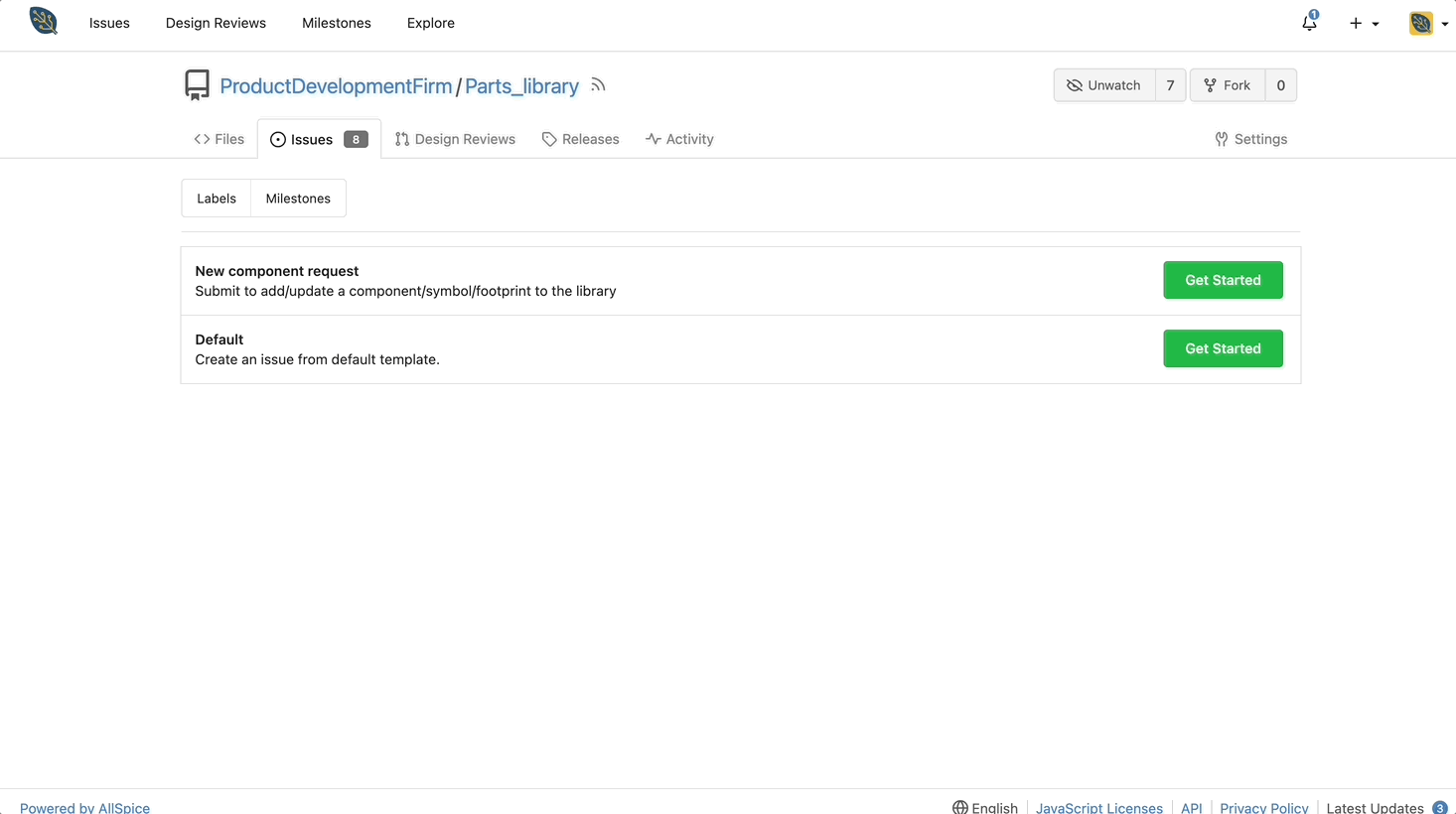
How do you use them
Git 101: Milestones
Please visit our main article on Milestones
Markdown
Markdown is a lightweight markup language with plain-text formatting syntax. Its main goal is to be easy to read and write, even when not converted to HTML. This article is written in markdown.
Visit our full markdown guide
Releases
See our full article on releases
